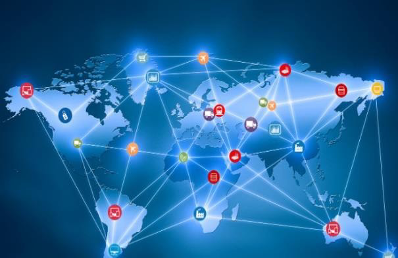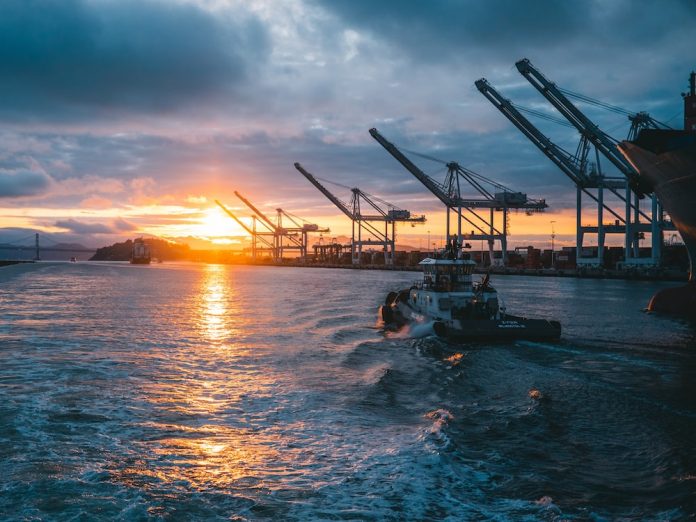Introduction
In an era dominated by technological advancements, the maritime industry finds itself at a crossroads where the integration of digital systems and connectivity brings unprecedented efficiency but also poses substantial cybersecurity challenges. As ships, ports, and logistics operations become increasingly reliant on digital technologies, the need for robust cybersecurity measures becomes paramount to ensure the safety, integrity, and reliability of maritime activities.
Understanding the Maritime Cybersecurity Landscape:-
The maritime sector, encompassing shipping, ports, and related logistical operations, plays a pivotal role in global trade, responsible for transporting over 80% of the world’s goods. However, this reliance on interconnected technologies exposes the industry to a spectrum of cyber threats, ranging from ransomware attacks to data breaches and system manipulations.
The Rise of Digitalization in Maritime :-

Image credit- DNV
Over the past decade, the maritime industry has witnessed a significant shift towards digitalization. From the implementation of Internet of Things (IoT) devices for real-time monitoring to the use of Electronic Chart Display and Information Systems (ECDIS) for navigation, vessels have embraced digital technologies to enhance operational efficiency and safety. While these advancements offer numerous benefits, they concurrently create entry points for cyber adversaries seeking to exploit vulnerabilities in the maritime ecosystem.
Cybersecurity Threats in Maritime :-

Image credit- GlobalSign
Ransomware Attacks: The maritime industry has not been immune to the global surge in ransomware attacks. Instances of vessels falling victim to ransomware, leading to disruptions in navigation systems and communicationchannels, highlight the urgency of fortifying cybersecurity measures.
Data Breaches: With the vast amount of sensitive information exchanged between vessels, ports, and shipping companies, data breaches pose a severe risk. Unauthorized access to cargo manifests, shipping schedules, and crew details can have far-reaching consequences, impacting not only individual entities but the entire supply chain.
Manipulation of Ship Systems: As ships become more automated and reliant on digital systems, the potential for malicious actors to manipulate critical ship functions, such as navigation and propulsion, raises concernsabout the safety of crew, cargo, and the environment.
Real-world Incidents and Impact :-
The maritime industry has already witnessed notable cybersecurity incidents that underscore thevulnerabilities present in the current digital landscape.

Image credit- LinkedIn
NotPetya Attack (2017): The NotPetya ransomware, initially targeting Ukrainian businesses, spread globally and affected the operations of Maersk, one of the world’s largest shipping companies. This incident paralyzed Maersk’s IT systems, leading to significant disruptions in port operations and causing an estimated loss of hundreds ofmillions of dollars.
Sea Change (2021): The Sea Change project, led by cybersecurity experts, demonstrated how easily hackers could manipulate the Automatic Identification System (AIS) signals of ships. By falsifying ship identities and locations, the project highlighted the potential for cyber attacks to disrupt maritime situational awareness andnavigation.
Regulatory Responses to Maritime Cybersecurity :-
Recognizing the evolving threat landscape, international and regional maritime authorities have taken steps toaddress cybersecurity concerns.
International Maritime Organization (IMO): The IMO, a specialized agency of the United Nations responsible for regulating shipping, has introduced guidelines and recommendations for maritime cybersecurity. The Resolution MSC.428(98) outlines measures to enhance the industry’s resilience against cyber threats, emphasizing the importance of risk assessments and cybersecurity management plans.

Image credit – edumaritime
European Union Agency for Cybersecurity (ENISA): The European Union has also actively addressed maritime cybersecurity through the work of ENISA. The agency provides guidance on risk management, incident reporting, and the development of a cybersecurity culture within the maritime sector.
Challenges and Opportunities in Implementing Cybersecurity Measures :-
While regulatory frameworks provide a foundation for addressing cybersecurity concerns, the maritime industry faces challenges in implementing effective measures across diverse stakeholders.

Image credit- LinkedIn
Complex Supply Chain Dynamics: The maritime supply chain involves numerous entities, including shipowners, port operators, shipping companies, and technology providers. Coordinating cybersecurity efforts across this complex ecosystem requires collaboration and standardized practices.
Legacy Systems and Infrastructure: Many vessels and maritime facilities still operate with legacy systems that may lack the security features of modern technologies. Retrofitting cybersecurity measures into existinginfrastructure poses challenges in terms of compatibility and cost.
Human Factor: Despite technological advancements, the human factor remains a significant cybersecurity vulnerability. Training ship crews and port personnel to recognize and respond to cyber threats is essential foroverall resilience.
The Way Forward: Towards a Cyber-Resilient Maritime Industry
As the maritime industry navigates the complexities of the digital age, adopting a holistic approach tocybersecurity is imperative.
Investment in Technology and Training: Allocating resources to invest in state-of-the-art cybersecurity technologies and providing ongoing training for maritime professionals can enhance the industry’s ability to detect, prevent, and respond to cyber threats.
Collaboration and Information Sharing: Establishing platforms for collaboration and information sharing among industry stakeholders can facilitate a collective defense against cyber threats. This includes sharing threat intelligence, best practices, and lessons learned from cyber incidents.
Continuous Monitoring and Incident Response: Implementing continuous monitoring of maritime systems and developing robust incident response plans are critical components of a proactive cybersecurity strategy. Timelydetection and swift response can mitigate the impact of cyber attacks.
Conclusion:-
As the maritime industry sails into an increasingly digital future, the importance of cybersecurity cannot be overstated. The sector must proactively address the evolving threat landscape to ensure the safety of crews, the security of cargo, and the resilience of global supply chains. By embracing cybersecurity measures, collaborating on a global scale, and staying vigilant in the face of emerging threats, the maritime industry can navigate the waves ofthe digital era securely and sustainably.
Author: Pranay Sharma, 4th Engineer




